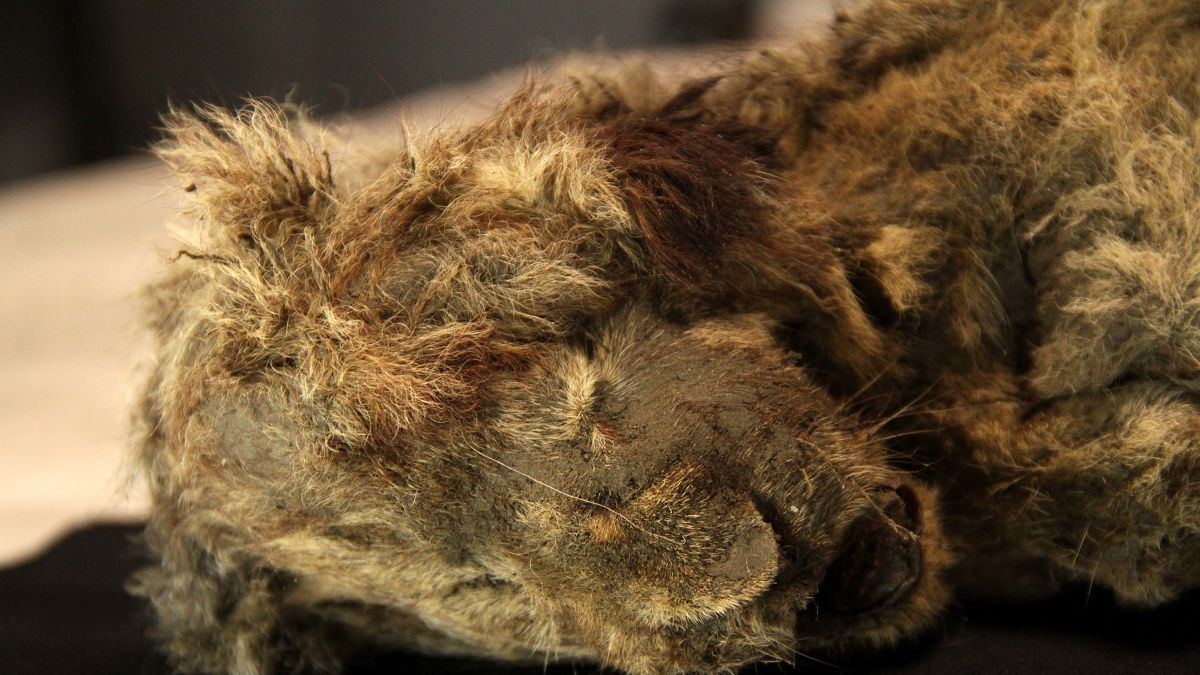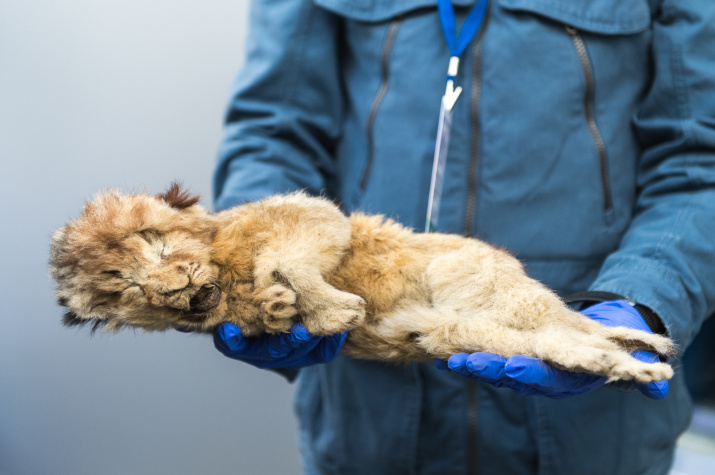
Frozen deep in the Siberian Arctic region is a little cave lion cub. The cub looks asleep. However, it’s been at least 28,000 years since she went into a permanent slumber. Here’s everything about the perfectly preserved specimen, down to her whiskers!
Say hello to Siberian Simba, a cave lion cub

A team of international scientists found a perfectly frozen lion cub in Siberia. Moreover, it is one of the best-preserved specimens to ever be found. The Siberian Simba, nicknamed Sparta is one of the two cave lions found in the excavation site. Th two cave lions are believed to have been around a month or two old when they died. They appear to be mummified, mostly in the mud around the same location but, several thousands of years apart.
The cubs were found near the Senyalyakh river in the Yakutia region of Siberia. However, the scientists are not sure how these young cubs died. Although they don’t think that they were predated upon. “It also seems probable that this site, during this time period, had some characteristics that made it more likely to rapidly freeze and preserve animals. The site was attractive to cave lions for making dens, but it was probably also susceptible to them collapsing.” noted the researchers.
According to carbon dating results from the study, Sparta, the more intact cub is estimated to be about 27,962 years old. And, the less intact cub, Boris, is 43,448 years old. Love Dalén, part of the research team tweeted that Sparta “is arguably the best-preserved ice age animal ever found!” on his Twitter. “There have been four such cubs found ever. However, what makes this find unique is Sparta, the female cub. To my knowledge, this is the best-preserved frozen specimen from the last Ice Age ever found. Sparta is in near-perfect condition,” stated Dalén.
What are cave lions?
Cave lions or Panthera spelae, are extinct big cats from the ice age. They once spanned across most of Eurasia. However, the species became extinct about 10,000 years ago. According to researchers, Sparta and Boris, the two cubs found roamed the prairie of today’s eastern Russia.
These big cats are closely related to the African lions. However, they were much larger in size. Additionally, they had less pronounced manes and a difference in coloring patterns of the adults and juveniles are very apparent. “Prehistoric people either only depicted female cave lions, or the cave lion males lacked mane. This is something we still don’t know. I guess we need to find a frozen adult male cave lion to figure that out,” explained Dalén in an email to NBC News.
What’s surprising is that Cave lions and the early men coexisted. How do we know this? Well, the walls of Chauvet cave in France are covered in images of men and cave lions together. The French cave contains “half of all cave lions Palaeolithic paintings known to date.” noted a researcher. “It is still unknown exactly how cave lions adapted to life in the harsh conditions of the high latitudes with their rapid season periodicity, strong winds, and cold and long winters with associated continuous nights,” they added.
